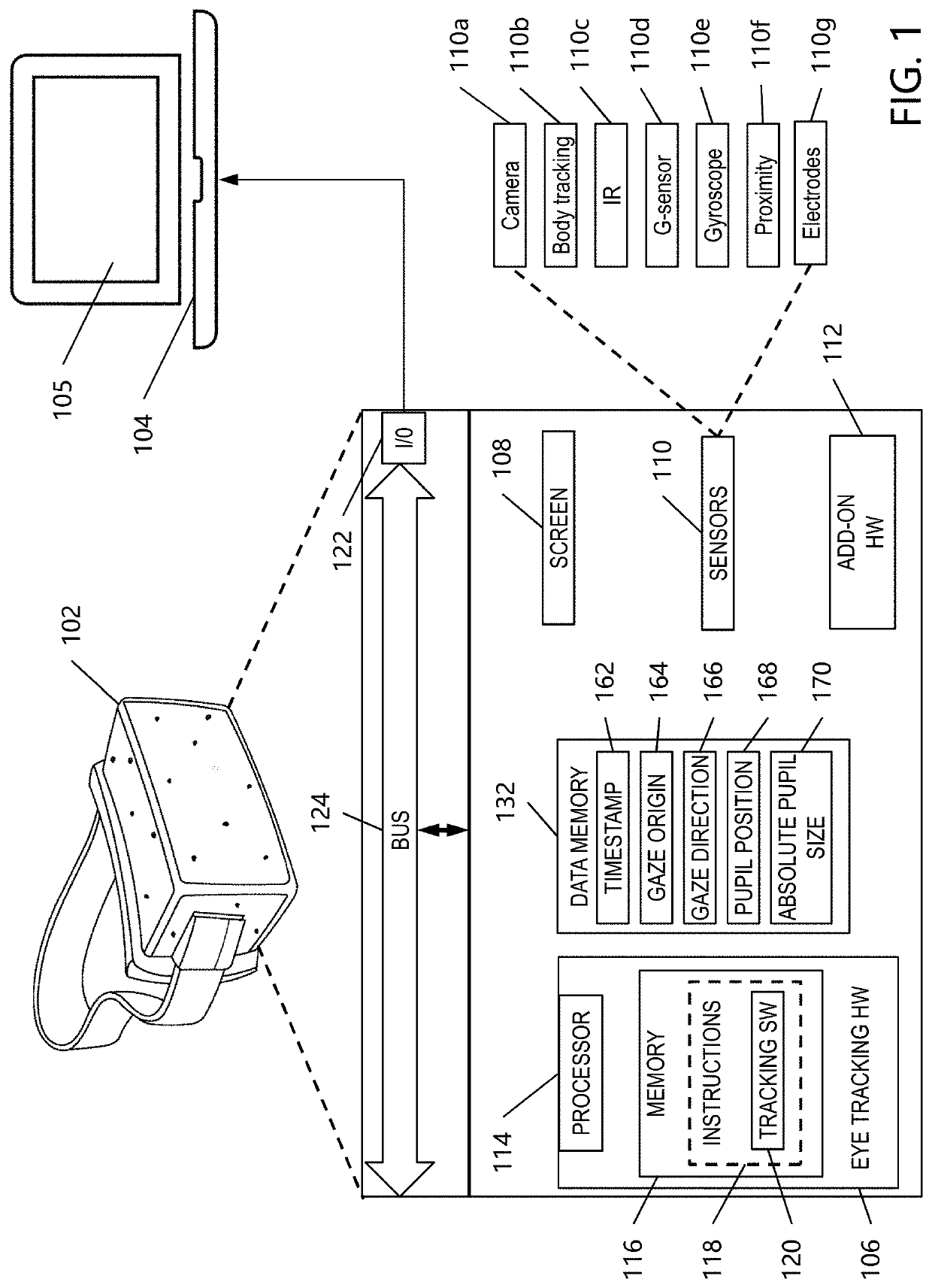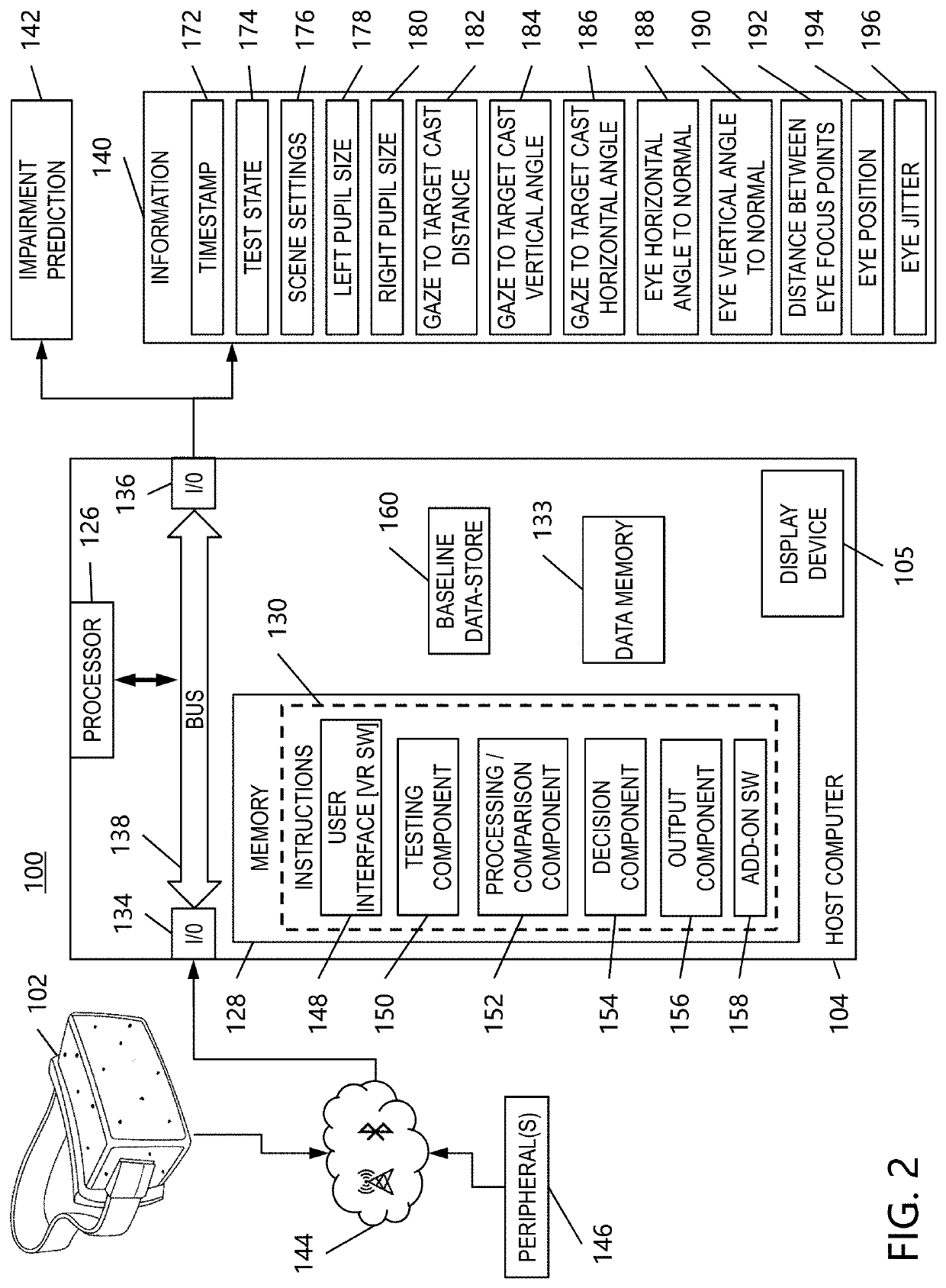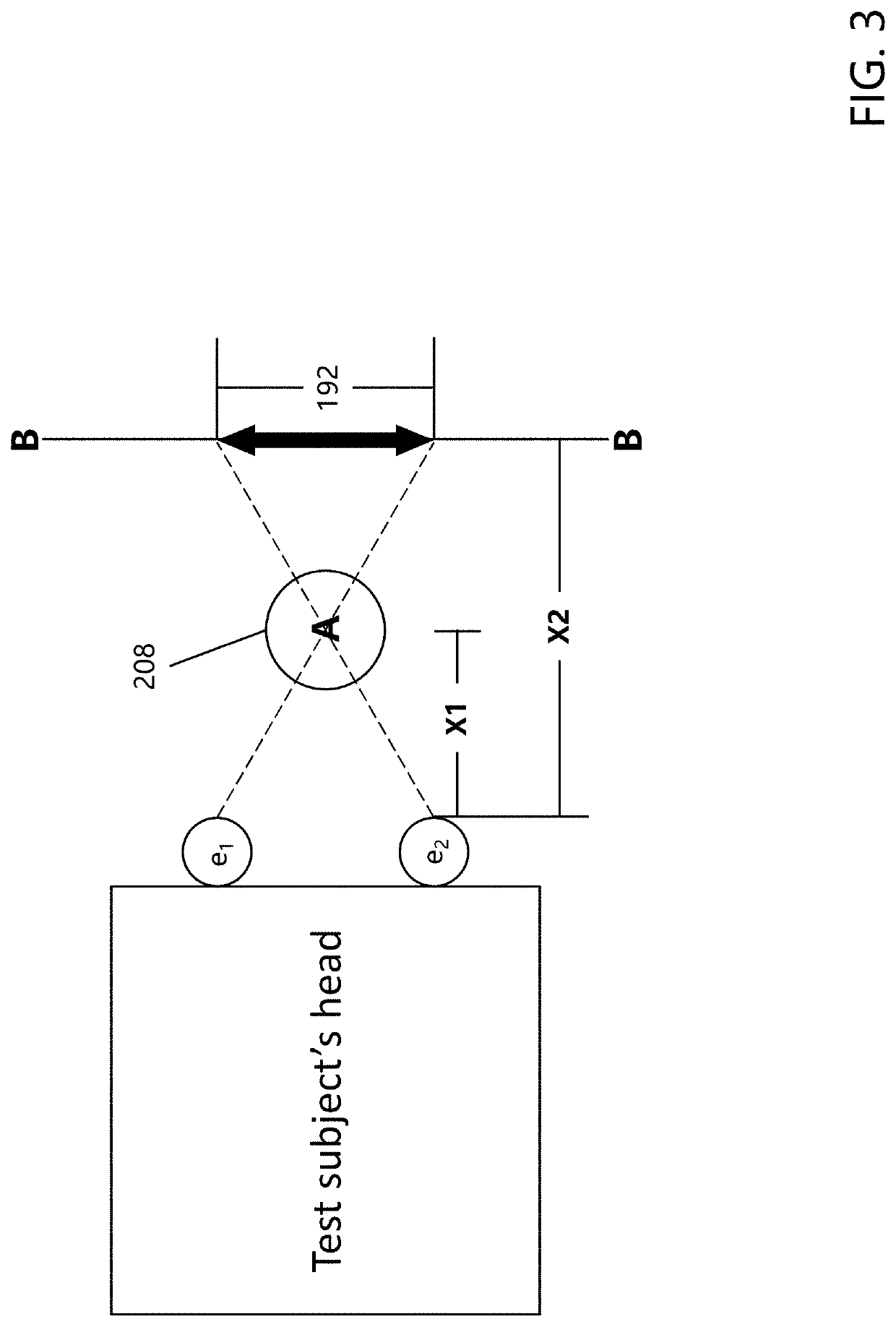Roadside impairment sensor
a sensor and impairment technology, applied in the field of roadside impairment sensors, can solve the problems of time-consuming and costly training, certification, and re-certification, required by dres, and no accepted or ubiquitous device such as breathalyzers for marijuana and other
- Summary
- Abstract
- Description
- Claims
- Application Information
AI Technical Summary
Benefits of technology
Problems solved by technology
Method used
Image
Examples
example 1
acking Test
[0116]The smooth tracking test measured the test subject's ability to track an object that moves horizontally back and forth in front of them. A sober subject can move their eyes smoothly along with the object as it moves, but an impaired subject will exhibit jumpy, jittery, or delayed tracking. FIG. 18 shows an example of a sober subject in the tracking test. When the subject becomes impaired, their inability to smoothly track the object is easily visible in the test data. FIG. 19 shows an example of an intoxicated subject in this test. The jerky tracking shown in FIG. 19 is easy to distinguish visually and is easily detected by the software of the VR headset 102.
example 2
GN Tests
[0117]The horizontal and vertical gaze nystagmus tests moved the tracked object to the edge of the test subject's vision to induct nystagmus or jitter in the subject's eyes. According to the DRE instructors, horizontal nystagmus is more common and tends to be present at a lower level of intoxication than vertical nystagmus. Both forms of nystagmus also tend to present themselves at smaller eye offset angles as the test subject becomes more intoxicated. Not all users exhibited nystagmus at the angles of the tracking object created by the VR headset 102, but there were clear examples of nystagmus in more intoxicated subjects. FIGS. 20 and 21 show a test subject's baseline and intoxicated HGN tests, respectively.
[0118]Conducting HGN and VGN tests in software also permitted the analysis of nystagmus in ways that an officer would not be able to in the field. For example, FIG. 22 shows a spectral analysis of the test result from FIG. 21 that shows very clear jitter at about 3.5 Hz...
example 3
[0119]The LOC test involved moving the tracked object towards the bridge of the test subject's nose and assessing the test subject's ability to cross their eyes and maintain focus on the tracked object. The angles of the subject's eyes were measured by the sensor directly, so the data from this test clearly shows the ability or inability of a test subject to cross their eyes. The DRE training material indicates that alcohol contributes to a test subject exhibiting lack of convergence. FIG. 23 shows an average quality sober result of the LOC test. The test subject from the FIG. 23 was able to cross their left eye more accurately than their right eye but could still reach a reasonable level of convergence. As the test subject becomes impaired, lack of convergence can be demonstrated in various ways. With the test subject from FIG. 23, intoxication reduced the ability of the right eye to converge on the tracking object. This result is shown in FIG. 24.
[0120]The LOC test above shows a s...
PUM
 Login to View More
Login to View More Abstract
Description
Claims
Application Information
 Login to View More
Login to View More - R&D
- Intellectual Property
- Life Sciences
- Materials
- Tech Scout
- Unparalleled Data Quality
- Higher Quality Content
- 60% Fewer Hallucinations
Browse by: Latest US Patents, China's latest patents, Technical Efficacy Thesaurus, Application Domain, Technology Topic, Popular Technical Reports.
© 2025 PatSnap. All rights reserved.Legal|Privacy policy|Modern Slavery Act Transparency Statement|Sitemap|About US| Contact US: help@patsnap.com



